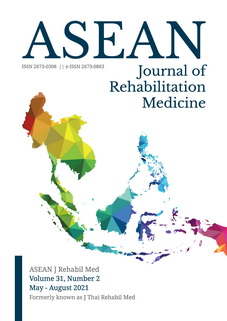Electrophysiological Findings in Human Parechovirus-Associated Acute Flaccid Paralysis: A Case Report
Keywords:
human parechovirus, acute flaccid paralysis, non-polio enterovirus, nerve conduction study, electromyographyAbstract
Objectives: This paper aims to describe the electrophysiological findings seen in a young boy diagnosed with human parechovirus-associated acute flaccid paralysis (AFP) in the Philippines.
Study design: Case report.
Setting: Hospital.
Subject: This is a case of a 1-year-old Filipino boy who presented with focal flaccid limb weakness following a prodromal illness, which then progressed asymmetrically and with respiratory paralysis. Lumbar puncture results were normal, nasopharyngeal swab showed enteroviral antigens, and human parechovirus (HPeV) was isolated in stool. Whole spine magnetic resonance imaging (MRI) initially demonstrated inflammatory changes in the C4-C6 cord levels, but was normal on repeat testing after five months. Following the set case definition, findings altogether led to diagnosis of enterovirus-related AFP.
Methods: Electromyography (EMG) and nerve conduction study (NCS) was conducted 6 months into the disease course.
Results: NCS of the upper limbs revealed normal sensory nerve action potential parameters. Compound motor action potentials were likewise normal except for apparent conduction blocks on the left proximal median and peroneal nerves. EMG showed active partial denervation and patchy evidence of reinnervation process on the tested limbs. These findings of a diffuse axonal motor neuropathy are compatible with neurophysiological changes seen in limited published studies on enterovirus-associated AFP.
Conclusion: Electrophysiological studies may be clinically useful as part of the multidisciplinary approach in diagnosing enterovirus-associated AFP. To our knowledge, this is the first electrophysiological description of parechovirus-associated AFP in Asia.
Keywords: human parechovirus, acute flaccid paralysis, non-polio enterovirus, nerve conduction study, electromyography
References
Apostol LN, Suzuki A, Bautista A, Galang H, Paladin FJ, Fuji N, et al. Detection of non-polio enteroviruses from 17 years of virological surveillance of acute flaccid paralysis in the Philippines. J Med Virol. 2012;84:624-31.
Abbasian F, Saberbaghi T, Moosapour A. Role of non-polioviruses in acute flaccid paralysis (AFP). J Gastroenterol Hepatol Res. 2012;1:44-8.
Alam MM, Khurshid A, Shaukat S, Sharif S, Rana MS, Angez M, et al. Identification of human parechovirus genotype, HPeV-12, in a paralytic child with diarrhea. J Clin Virol. 2012;55:339-42.
Legay V, Chomel JJ, Fernandez E, Lina B, Aymard M, Khalfan S. Encephalomyelitis due to human parechovirus type 1. J Clin Virol. 2002;25:193-5.
Maloney JA, Mirsky DM, Messacar K, Dominguez SR, Schreiner T, Stence NV. MRI findings in children with acute flaccid paralysis and cranial nerve dysfunction occurring during the 2014 enterovirus D68 outbreak. Am J Neuroradiol. 2015;36:245-50.
Kolehmainen P, Jääskeläinen A, Blomqvist S, Kallio-Kokko H, Nuolivirta K, Helminen M, et al. Human parechovirus type 3 and 4 associated with severe infections in young children. Pediatr Infect Dis J. 2014;33:1109-13.
Ceccanti M, Sbardella E, Letteri F, De Michele M, Falcou A, Romanzi F, et al. Acute flaccid paralysis by enterovirus D68 infection: first Italian description in adult patient and role of electrophysiology. Front Neurol. 2017 Nov 27;8:638. doi: 10.3389/fneur.2017.00638.
Downloads
Published
How to Cite
Issue
Section
License
Copyright (c) 2021 ASEAN Journal of Rehabilitation Medicine

This work is licensed under a Creative Commons Attribution-NonCommercial-NoDerivatives 4.0 International License.






